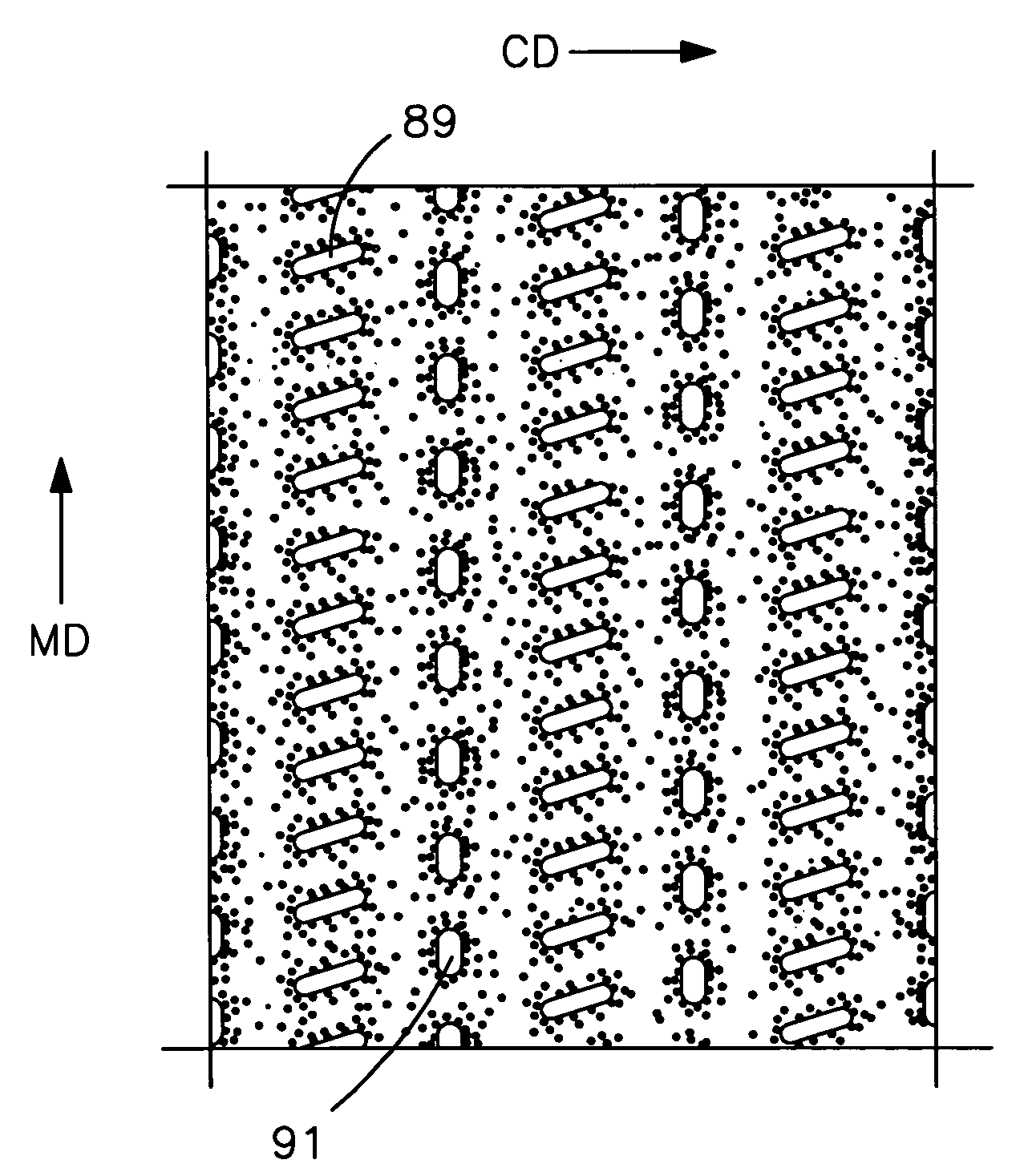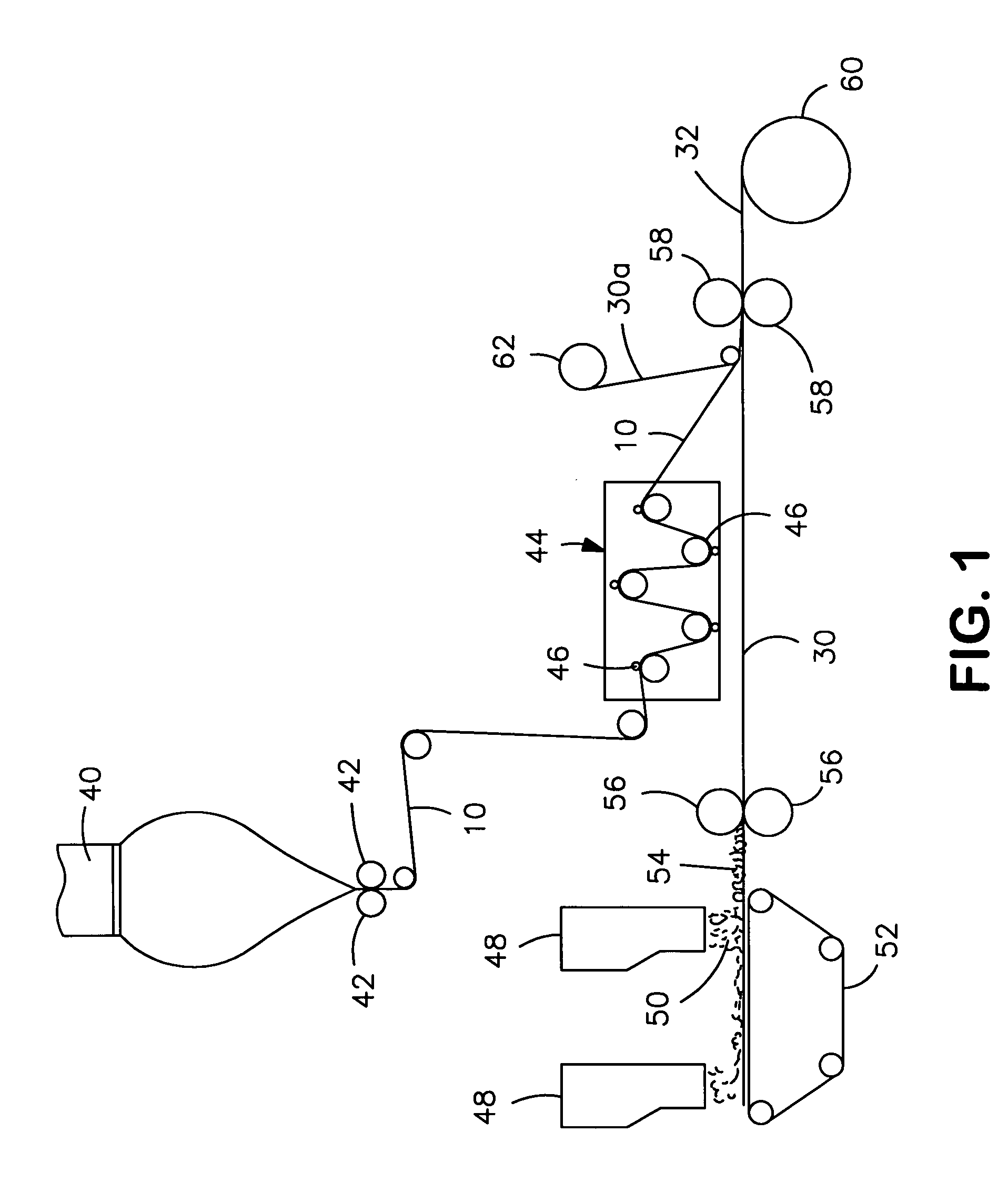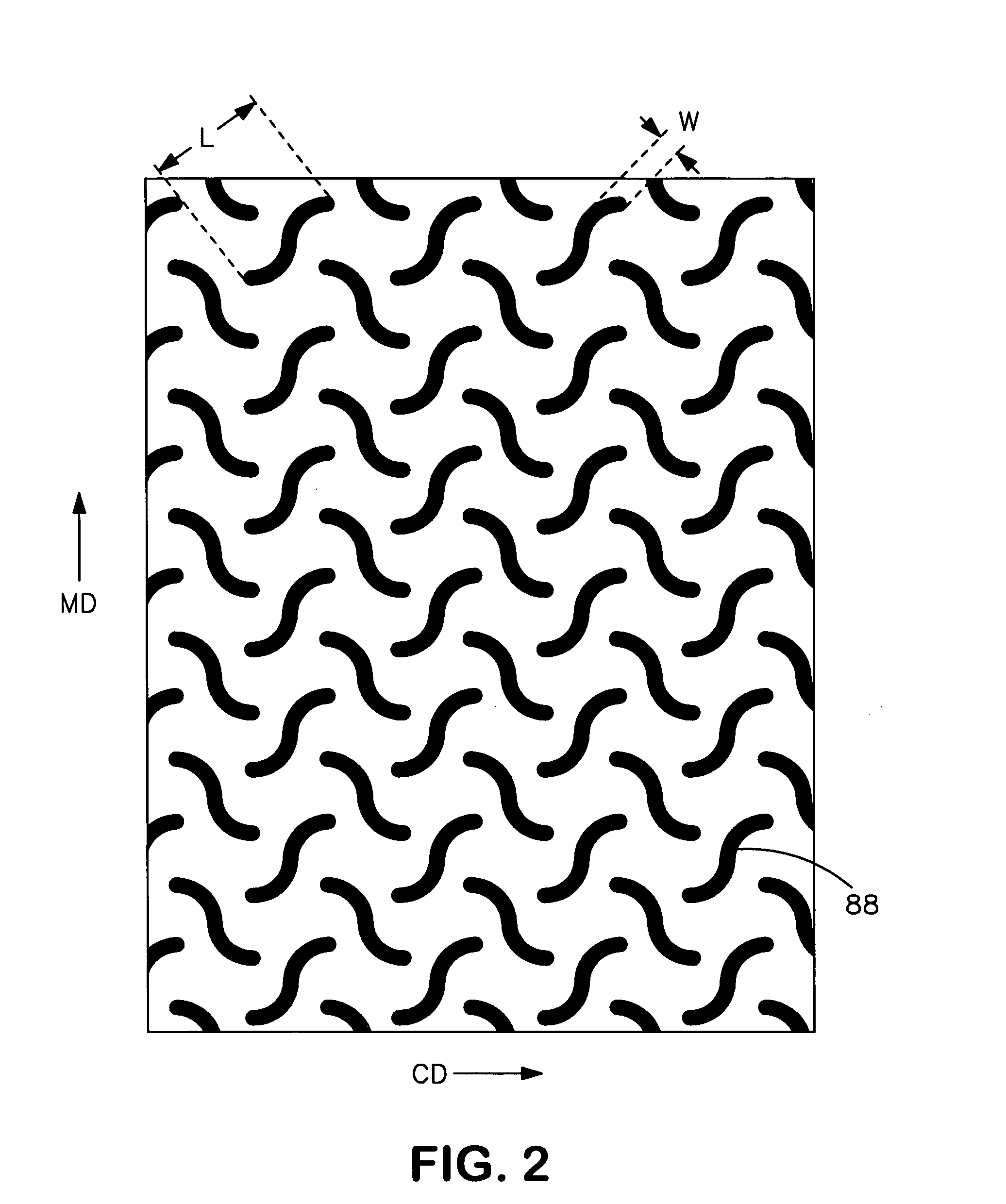Nonwoven composite containing an apertured elastic film
a technology of apertured elastic and nonwoven composites, which is applied in the direction of weaving, bandages, synthetic resin layered products, etc., can solve the problems of uncomfortable and unsatisfactory against the wearer's skin
- Summary
- Abstract
- Description
- Claims
- Application Information
AI Technical Summary
Problems solved by technology
Method used
Image
Examples
example 1
[0106]The ability to form an elastic nonwoven composite was demonstrated. The elastic film was formed from 93 wt. % of EXACT™ 5361 (ExxonMobil Chemical Co.), 5 wt. % of Dow Polyethylene 6401 (Dow Chemical Co.), and 2 wt. % of SCC116921 pigment (Standridge Color Corp.). EXACT™ 5361 is a metallocene-catalyzed polyethylene plastomer having a density of 0.86 grams per cubic centimeter, a peak melting temperature of 36° C., and a melt index of 3.0 grams per 10 minutes (190° C., 2.16 kg). Dow Polyethylene 6401 is a low density polyethylene having a density of 0.9215 grams per cubic centimeter, a melting point of 111° C., and a melt index of 2.0 grams per 10 minutes (190° C., 2.16 kg). The SCC116921 pigment contained titanium dioxide blended with polypropylene and polypropylene random copolymers.
[0107]The polymers were compounded by weighing appropriate portions of pellets of each polymer, combining them into one container, and mixing them together by stirring. After compounding, the film ...
example 2
[0109]The ability to form an elastic nonwoven composite was demonstrated. The elastic film was formed from 71 wt. % of EXACT™ 5361 (ExxonMobil Chemical Co.), 25 wt. % KRATON® MD6673 (Kraton Polymers, LLC of Houston Tex.), and 2 wt. % of a SCC116921 pigment (Standridge Color Corp.). KRATON® MD6673 contains 68 wt. % of a styrene-ethylene-butylene-styrene block copolymer (KRATON® MD6937), 20 wt. % REGALREZ™ 1126 (Eastman Chemical) and 12 wt. % EPOLENE™ C-10 polyethylene wax (Eastman Chemical). The SCC116921 pigment contained titanium dioxide blended with polypropylene and polypropylene random copolymers. The polymers were compounded by weighing appropriate portions of pellets of each polymer, combining them into one container, and mixing them together by stirring.
[0110]After compounding, the polymer composition was extruded at a melt temperature of 403° F. and cast onto a chill roll (set to a temperature of 21° C.) operating at a speed of about 45 feet per minute. The film was then the...
example 3
[0111]The ability to form an elastic nonwoven composite was demonstrated. The elastic film was formed from 98 wt. % of EXACT™ 5361 (ExxonMobil Chemical Co.) and 2 wt. % of Dow Polyethylene 6401 (Dow Chemical Co.). The polymers were compounded by weighing appropriate portions of pellets of each polymer, combining them into one container, and mixing them together by stirring. After compounding, the film samples were blown between a collapsing nip (operated at 30 feet per minute) so that a melt temperature of about 386° F. was achieved. The blown film was thermally bonded between two polypropylene spunbond facings having a basis weight of approximately about 17 grams per square meter. Specifically, the film and facings were fed between an anvil and patterned roll (S-weave). The patterned roll was heated to a roll surface temperature of 211° F., the anvil roll was heated to a roll surface temperature of 203° F., and the pressure was 117 pounds per linear inch. The rolls operated at a sp...
PUM
| Property | Measurement | Unit |
|---|---|---|
| length | aaaaa | aaaaa |
| length | aaaaa | aaaaa |
| temperature | aaaaa | aaaaa |
Abstract
Description
Claims
Application Information
 Login to View More
Login to View More - R&D
- Intellectual Property
- Life Sciences
- Materials
- Tech Scout
- Unparalleled Data Quality
- Higher Quality Content
- 60% Fewer Hallucinations
Browse by: Latest US Patents, China's latest patents, Technical Efficacy Thesaurus, Application Domain, Technology Topic, Popular Technical Reports.
© 2025 PatSnap. All rights reserved.Legal|Privacy policy|Modern Slavery Act Transparency Statement|Sitemap|About US| Contact US: help@patsnap.com



